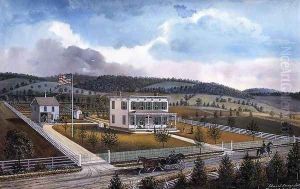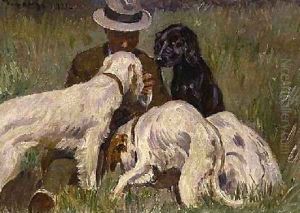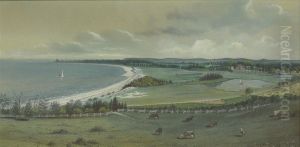Edward Lange Paintings
Edward Lange was a notable American artist, known particularly for his detailed and picturesque paintings that often depicted the rural landscapes and town views of Long Island, New York in the late 19th and early 20th centuries. Born in 1846, Lange's work provides a valuable visual record of the period, capturing the architecture, fashion, and ways of life during a time of significant change and modernization in American history.
Edward Lange's career as an artist began during a period when America was experiencing rapid industrialization and urbanization. Despite these changes, Lange focused his artistic efforts on capturing the more pastoral and bucolic aspects of American life. His paintings were characterized by their attention to detail, with an almost documentary precision that made them popular among those who appreciated the charm and nostalgia of rural America.
Lange's work was part of a broader movement in American art that sought to document and celebrate the nation's regional characteristics at a time when local identities were perceived to be under threat from the homogenizing effects of modernization. His paintings serve not only as works of art but also as historical documents that offer insight into the architecture, transportation, and social life of the regions he depicted.
Unfortunately, despite his contribution to the artistic and historical record of American life, Edward Lange did not gain the same level of fame as some of his contemporaries. Nonetheless, his paintings continue to be appreciated by art historians and collectors for their unique blend of artistic beauty and historical significance.
Edward Lange passed away in 1912, leaving behind a legacy that would be appreciated by future generations for its rich portrayal of a transformative era in American history. His paintings remain an invaluable resource for those interested in the visual culture of the United States during the late 19th and early 20th centuries, and his meticulous approach to capturing the essence of rural America continues to be celebrated in art historical circles.


